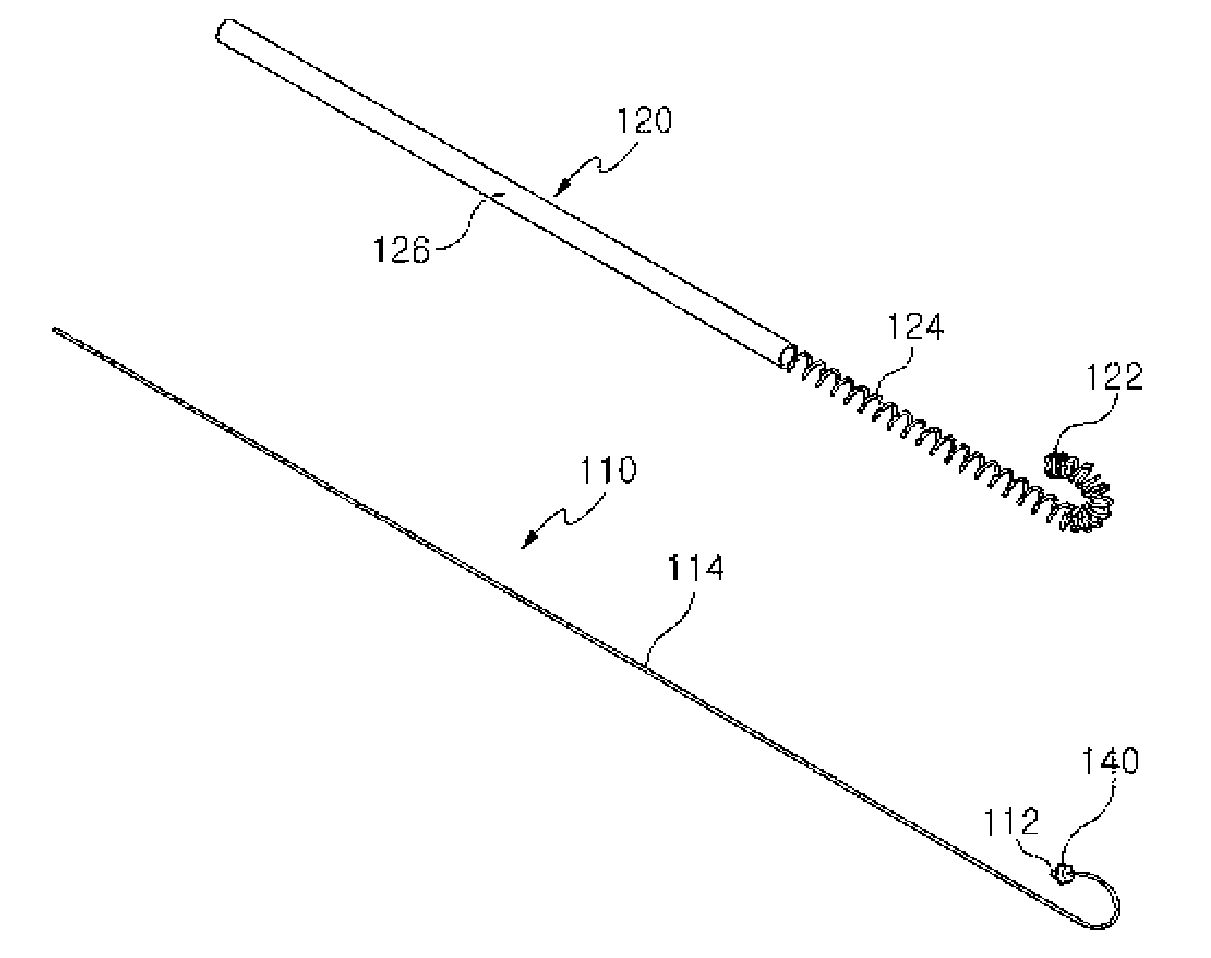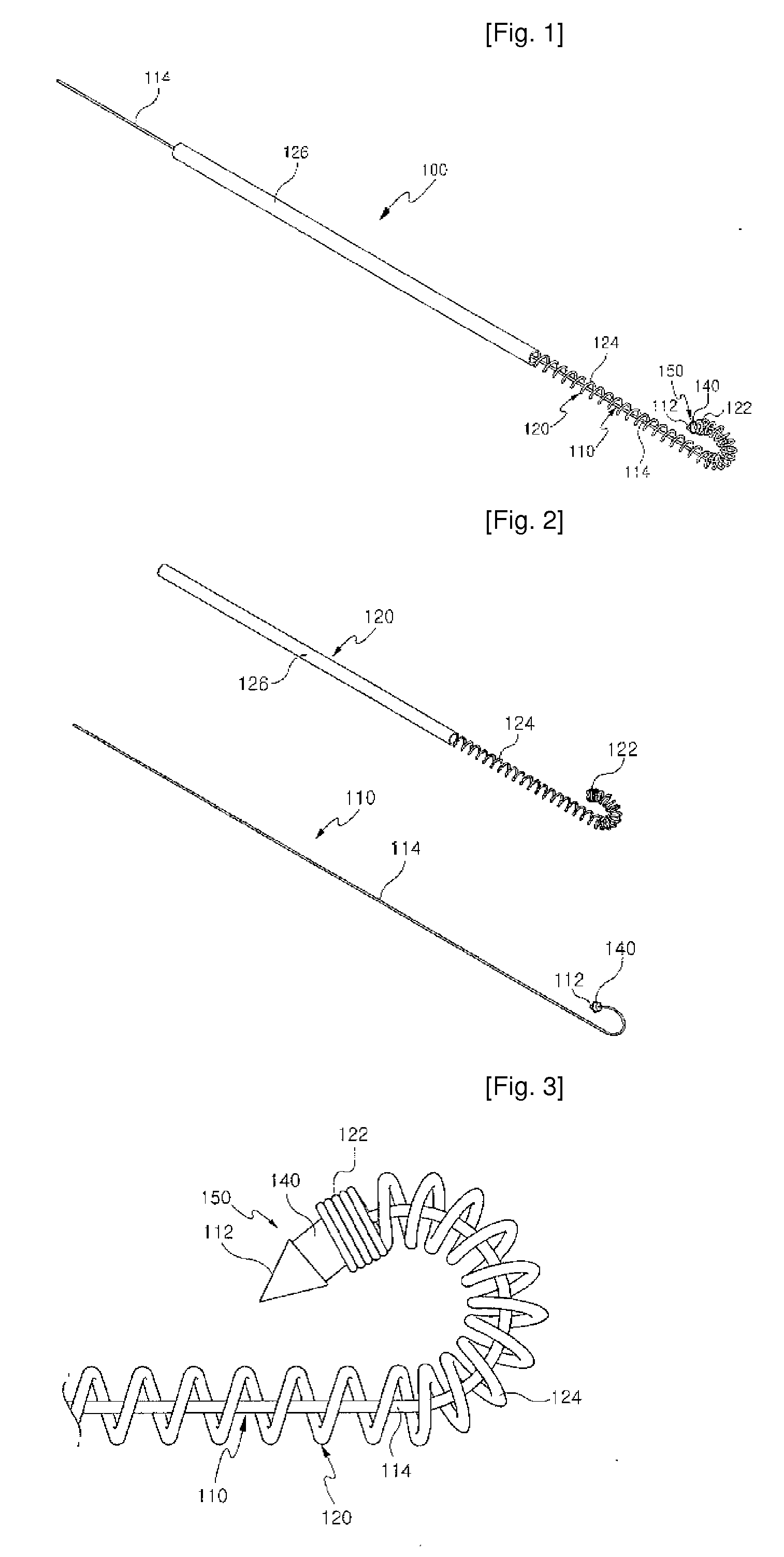Radio Frequency Ablation Electrode for Selected Tissue Removal
a radiofrequency ablation and electrode tip technology, applied in the field of radiofrequency electrodes, can solve the problems of inability to achieve therapeutic effects, lower back pain, lumbar pain, etc., and achieve the effect of convenient positioning of the electrode tip
- Summary
- Abstract
- Description
- Claims
- Application Information
AI Technical Summary
Benefits of technology
Problems solved by technology
Method used
Image
Examples
Embodiment Construction
[0048]Hereinbelow, preferable Examples of the present invention will be described in detail with reference to the accompanying figures.
[0049]FIG. 1 is a perspective view of the radiofrequency electrode according to the first Example of the present invention, FIG. 2 is a perspective view of separation of an external electrode and an internal electrode of FIG. 1, and FIG. 3 is a detailed view of the end part of the radiofrequency electrode of FIG. 1. As illustrated in the figures, the radiofrequency electrode 100 of the first Example is configured such that the first electrode 110 in the form of a metal wire is inserted into the second electrode 120 having its end part in the form of a coil spring.
[0050]The first electrode 110 and the second electrode 120 are guided by a catheter 60 (illustrated in FIG. 8) and inserted into a body tissue.
[0051]The first electrode 110 is configured such that the first electrode lead 114 is inserted into the second electrode 120 and disposed therein, an...
PUM
 Login to View More
Login to View More Abstract
Description
Claims
Application Information
 Login to View More
Login to View More - R&D
- Intellectual Property
- Life Sciences
- Materials
- Tech Scout
- Unparalleled Data Quality
- Higher Quality Content
- 60% Fewer Hallucinations
Browse by: Latest US Patents, China's latest patents, Technical Efficacy Thesaurus, Application Domain, Technology Topic, Popular Technical Reports.
© 2025 PatSnap. All rights reserved.Legal|Privacy policy|Modern Slavery Act Transparency Statement|Sitemap|About US| Contact US: help@patsnap.com



